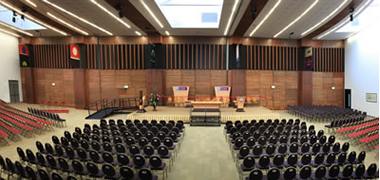Emigration exodus of 300,000 people from Ireland in the past four years
A nyc of Irl SURVEY SHOWS

Over 300,000 people have emigrated in the last four years.
Over one quarter of Irish households have seen a close family member emigrate in the past two years, according to a survey commissioned by the National Youth Council of Ireland.
Half of those aged between 18 and 24 have considered emigrating.
Four out of ten adults aged between 25 and 34 have also considered leaving the country.
The survey is part of a new report on emigration and its impact on young people.
It suggests that emigration is not just a matter for the country’s youth, as over one quarter of those aged between 35 and 54 have also considered moving abroad.
One in ten Irish people had seen a close family member emigrate and had considered doing the same thing themselves.
In the past four years, over 300,000 people have emigrated from Ireland; 40% were aged between 15 and 24.
The NYCI, an umbrella body which represents over 50 youth organisations around the country, is calling for the Government to develop and implement a strategy for Irish emigrants.
It also wants to see the appointment of a dedicated minister with responsibility for emigration policy and for the Irish abroad.
Speaking on RTÉ’s Morning Ireland, Deputy Director of the National Youth Council of Ireland James Doorley said that many young Irish people emigrating to Australia, Canada and elsewhere faced issues when they arrived in a new country such as accessing health services or looking for work.
Mr Doorley said that the experience of emigration for many young Irish people was often positive but there was a need for a Government strategy to assist those who struggled after emigrating.
The survey also shows that most young Irish people intended to return home to Ireland after five years abroad.
Mr Doorley said that some young people travel to Canada with enough money in savings to support themselves financially for one month without realising that it can take six months to get a job.
He said in other destinations people struggle with loneliness and other issues.
He said the NYCI wanted the Government to engage with young Irish people abroad who may be having difficulties adapting to their new homes.
NUI Galway nominated among the world’s top universities


Academics and employers gathered to announce the world’s top universities in 30 individual disciplines as part of the 2013 QS World University Rankings by Subject.
NUI Galway, along with eight other Irish institutions appeared on the list of the world’s top 200 universities. And considering that some 678 third level education facilities were ranked in total, Galway’s overall positioning should boost its credentials as a university worth attending.
The subject area ranking, which covers mathematics, economics, history, environmental sciences, and 25 other distinctions, is based on last year’s rankings data. NUI Galway featured in five of the 30 subjects including English language and literture (151 – 200), history (101 – 150), computer science and info systems (101 – 150), pharmacy and pharmacology (151 – 200), and law (151 – 200)
Speaking of the announcement, president of NUI Galway, Dr Jim Browne, said: “This is very good news for NUI Galway as the QS World University Rankings by Subject series takes into the account the opinion of academics and employers via a global survey confirming that our position globally is on the rise.
We operate in a global market, competing for students and research support on an international playing field, and this international recognition of the quality of our research and teaching from academic and employer opinions around the world are very significant.”
Now in its third year, The QS World University Rankings by Subject series is the only internationally approved evaluation that allows prospective students to compare universities in their particular area of interest.
The 2013 QS World University Rankings by Subject evaluated 2,858 universities and ranked 678 institutions in total.
Ireland’s headline inflation rate remained flat last month just as it did twelve months ago, according to new data from the (CSO). Inflation as measured by the consumer price index was 0.5 per cent on an annual basis.
The CSO data shows the most significant annual price increases were in increases in alcoholic beverages & tobacco (+5.3 per cent), education (+4.8 per cent) and miscellaneous goods & services (+2.5 per cent). There were decreases in communications (-4.6 per cent), furnishings, household equipment & routine household maintenance (-3.4 per cent) and clothing & footwear (-1.8 per cent).
Irish rate of inflation continued to fall for April


Services saw inflation of 1.7% but price of goods fell by 1%
The annual rate of inflation for services was 1.7 per cent to the end of April although the price of goods decreased by 1.0 per cent. When mortgage interest repayments are stripped out services increased by 2.5 per cent in the year since April 2012.
Isme, the Irish Small and Medium Enterprises Association, warned the Government against complacency over the figures which it said masked real increased government costs.
“If we are serious about making the transition from a reliance on domestic demand to a sustainable export-led growth, we must bring all of our costs in line with our trading partners,” said ISME chief executive, Mark Fielding.
“The reality, from a business viewpoint, is that state cost increases, in particular, utility costs, local authority rates and charges continue to negatively impact businesses, who themselves have cut their manageable costs to the bone.”
€1.4m Illegal cigarettes seized in Galway and Louth
400kg of tobacco and counterfeit vodka also discovered by gardaí and Revenue officials
Black market cigarettes and tobacco valued at more than €1.5 million have been seized in counties Galway and Louth.
A search by Revenue customs officials at a commercial property in Athenry, Co Galway yesterday yielded a haul of some 2 million Benson & Hedges brand cigarettes, which were valued at €950,000.
The cigarettes were brought into the State from Belgium through Dublin Port, Revenue said.
Separately, gardaí and Revenue officials discovered a haul of 1.2 million cigarettes, valued at €550,000, and 400kg of tobacco, valued at €180,000, during a search of a property at Faughart near Dundalk. Counterfeit vodka was also discovered during the search.
Nobody has been arrested in connection with the hauls, which Revenue said if sold on the black market would have resulted in a loss of more than €1.3 million to the exchequer.
Genetic Test Helps Predict Risk of Prostate Cancer Recurrence


Prostate cancer ranks as the most common internal malignancy diagnosed in men in the United States, but often does not require extensive treatment.
A study using tissue samples from men who underwent surgical removal of the prostate at UC San Francisco confirmed that a genetic test that measures cell cycle progression (CCP) — an indicator of how rapidly cancer cells are growing and dividing — can be a useful tool for predicting who will have a recurrence of the disease, especially when combined with existing information from laboratory and pathology tests.
The CCP score provides a biomarker that eventually might help guide decisions about whether to pursue additional treatment after surgery, such as radiation therapy.
The study, published in the Journal of Clinical Oncology (2013 Apr 10;31(11):1428-34), used the UCSF Urologic Oncology Database to access tissue samples and medical records from men who had undergone prostatectomy at UCSF and been followed for at least five years after surgery.
A commercial laboratory operated by Myriad Genetics, the company that developed the test, conducted genetic analysis of the tissue samples to determine a CCP score in 413 patients. The researchers at UCSF then examined how well the CCP score predicted which men had a recurrence of their disease after surgery.
The CCP score was also evaluated with another validated predictive score, the Cancer of the Prostate Risk Assessment post-surgery score (CAPRA-S). The CAPRA-S score is based on preoperative PSA levels and information gleaned from surgery, including how much the tumor has invaded tissues surrounding the prostate and how aggressive he cancer cells look when examined under a microscope.
Investigators found that the CAPRA-S and CCP together they were more useful than either alone, and that adding the CCP was especially helpful in men who appeared to have low-risk disease based on the CAPRA-S score alone.
In addition to the 413 patients in the UCSF group, the researchers also looked at the predictive results of the CCP combined with the CAPRA-S in a group of patients previously studied at the Scott and White Clinic in Georgetown, TX, for whom longer-term follow-up was available. The combination of the CCP and CAPRA-S again accurately predicted recurrence in this group.
“One of the big challenges in prostate cancer is knowing when and how aggressively to treat patients,” said Matthew R. Cooperberg, MD, MPH, lead author of the study. “Biomarkers such as the CCP can provide valuable data to guide treatment decisions.”
The UCSF Urology Department is currently running additional studies with the CCP score, as well as other promising biomarkers and imaging tests, in men who have not undergone surgery or other treatments.
“Our hope is that these tests will help more men with low-risk prostate cancer avoid unnecessary treatment, while ensuring that those with more aggressive cancers do not miss the window of opportunity for cure,” said Cooperberg.
This research was funded by Myriad Genetics and by grants from the Department of Defense and National Cancer Institute.
Southampton scientists climb Everest for study
SCIENTISTS AND MEDICAL STAFF FROM SOUTHAMPTON ARE TACKLING ONE OF THE HARSHEST ENVIRONMENTS IN THE WORLD TO STUDY THE IMPACT OF LOW OXYGEN LEVELS ON THE HUMAN BODY.
The University of Southampton team has travelled to Nepal to carry out vital research into hypoxia – which is a common problem for patients in intensive care.
They are climbing to base camp of Mount Everest.
The scientists hope the expedition will give them a better understanding of why the condition can lead to death.




No comments:
Post a Comment